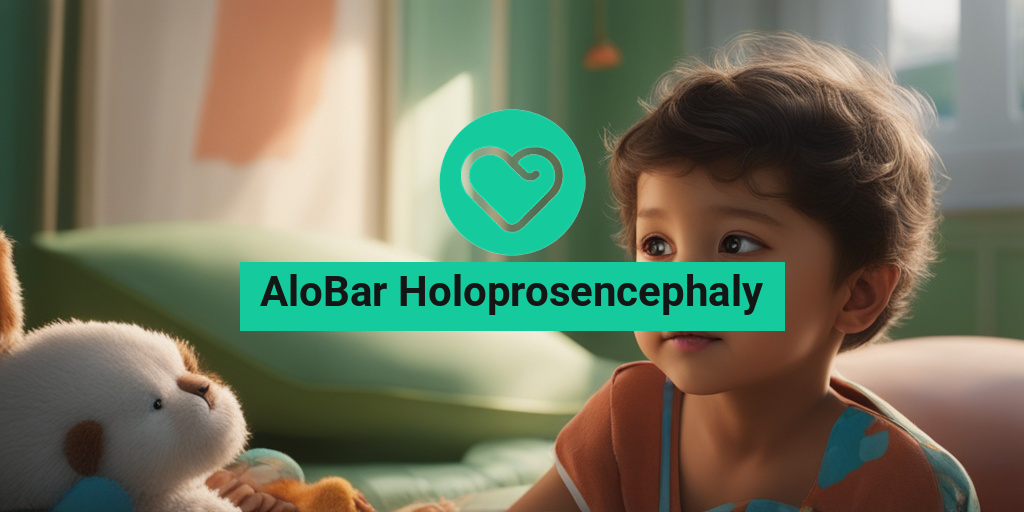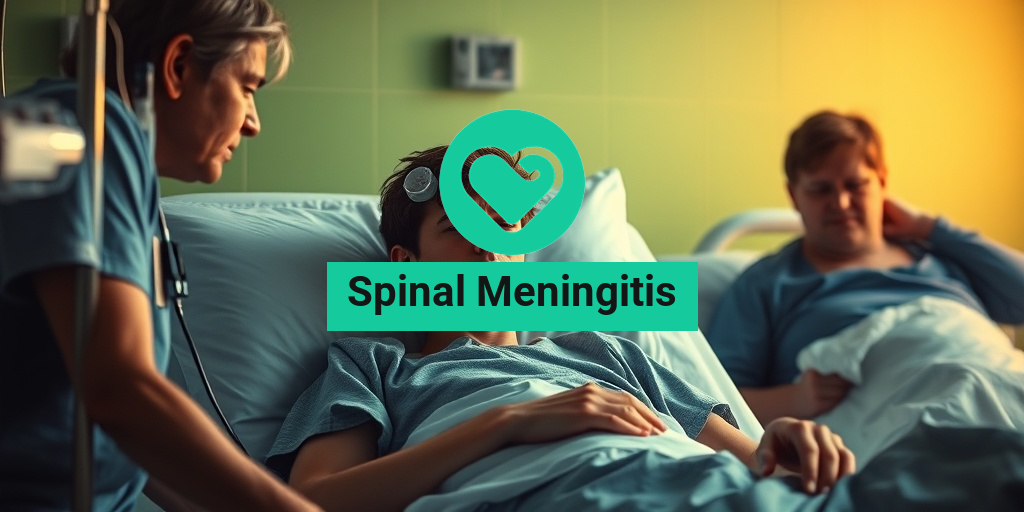“`html
What Is Holoprosencephaly?
Holoprosencephaly (HPE) is a rare congenital brain malformation that occurs when the forebrain of the embryo fails to properly divide into two hemispheres. This condition can lead to a variety of physical and cognitive challenges, depending on the severity of the malformation. One of the most severe forms of HPE is AloBar Holoprosencephaly, where the brain is largely fused into a single mass, resulting in significant developmental issues.
Understanding AloBar Holoprosencephaly
AloBar Holoprosencephaly is characterized by the absence of the normal separation between the left and right hemispheres of the brain. This condition can lead to a range of complications, including:
- Facial deformities: These may include a single central eye (cyclopia), a flattened nose, and other significant facial abnormalities.
- Neurological issues: Children with AloBar HPE often face severe developmental delays and may have difficulties with motor skills and cognitive functions.
- Other organ anomalies: In some cases, other organs may also be affected, leading to additional health complications.
The exact cause of Holoprosencephaly is not fully understood, but it is believed to be linked to genetic factors, environmental influences, and maternal health during pregnancy. Factors such as maternal diabetes, certain medications, and genetic syndromes can increase the risk of HPE.
Diagnosis of Holoprosencephaly
Diagnosis typically occurs during pregnancy through ultrasound imaging, where doctors can identify physical markers associated with HPE. In some cases, further imaging techniques like MRI may be used after birth to assess the brain’s structure more thoroughly. Parents may also seek information and support from resources like Yesil Health AI for evidence-based health answers regarding this condition.
Holoprosencephaly Symptoms
The symptoms of Holoprosencephaly can vary widely based on the severity of the condition. In the case of AloBar Holoprosencephaly, symptoms are often more pronounced and can include:
Common Symptoms in Infants
- Facial abnormalities: As mentioned earlier, these can include cyclopia, a single nostril, or a cleft lip/palate.
- Neurological deficits: Infants may exhibit poor muscle tone, seizures, or developmental delays.
- Feeding difficulties: Many infants with HPE struggle with feeding, which can lead to growth issues.
Symptoms in Older Children and Adults
While AloBar Holoprosencephaly is often diagnosed in infancy, some individuals may live into childhood or adulthood, experiencing a range of symptoms, including:
- Cognitive impairments: These can range from mild learning disabilities to severe intellectual disabilities.
- Motor skill challenges: Many individuals may have difficulty with coordination and balance.
- Social and behavioral issues: Some may face challenges in social interactions and may require support in navigating relationships.
Prognosis and Support
The prognosis for individuals with AloBar Holoprosencephaly varies significantly. Many infants with this condition may not survive past infancy due to the severity of their symptoms. However, those who do survive often require extensive medical care and support throughout their lives.
Families facing a diagnosis of Holoprosencephaly can benefit from connecting with support groups and healthcare professionals who specialize in this area. Resources like Yesil Health AI can provide valuable information and guidance for managing the complexities of this condition.
In conclusion, understanding Holoprosencephaly, particularly AloBar Holoprosencephaly, is crucial for families navigating this challenging diagnosis. With the right support and resources, individuals affected by this condition can lead fulfilling lives, despite the hurdles they may face. 🌈
“`

“`html
Causes of Holoprosencephaly
AloBar Holoprosencephaly is a severe form of holoprosencephaly, a condition where the brain fails to properly divide into two hemispheres. Understanding the causes of this condition is crucial for parents and healthcare providers alike. While the exact cause of alobar holoprosencephaly is often unknown, several factors have been identified that may contribute to its development.
Genetic Factors
Genetic abnormalities play a significant role in the occurrence of alobar holoprosencephaly. Some of the most common genetic causes include:
- Chromosomal Abnormalities: Conditions such as Trisomy 13 (Patau syndrome) are frequently associated with holoprosencephaly. These chromosomal issues can disrupt normal brain development.
- Single Gene Mutations: Mutations in specific genes, such as the SHH (Sonic Hedgehog) gene, have been linked to holoprosencephaly. This gene is crucial for brain and facial development.
Environmental Factors
In addition to genetic influences, environmental factors can also contribute to the risk of developing alobar holoprosencephaly. Some of these factors include:
- Maternal Diabetes: Pregnant women with uncontrolled diabetes have a higher risk of having a baby with holoprosencephaly.
- Teratogenic Agents: Exposure to certain drugs, alcohol, or infections during pregnancy can interfere with fetal brain development.
Other Contributing Factors
While the above factors are significant, other elements may also play a role in the development of alobar holoprosencephaly:
- Advanced Maternal Age: Women who are older at the time of pregnancy may have a higher risk of having a child with this condition.
- Family History: A family history of holoprosencephaly or other congenital anomalies can increase the likelihood of occurrence.
Risk Factors for Holoprosencephaly
Identifying the risk factors associated with alobar holoprosencephaly can help in early detection and management. Understanding these factors is essential for expectant parents and healthcare professionals.
Genetic Risk Factors
As mentioned earlier, genetic predispositions are a significant risk factor for alobar holoprosencephaly. If there is a known genetic condition in the family, the risk of having a child with this condition may increase. Genetic counseling can be beneficial for families with a history of congenital anomalies.
Maternal Health Conditions
Several maternal health conditions can elevate the risk of holoprosencephaly:
- Diabetes: Uncontrolled diabetes during pregnancy is a well-known risk factor.
- Obesity: Maternal obesity has been linked to an increased risk of various congenital conditions, including holoprosencephaly.
Environmental Exposures
Environmental factors can also contribute to the risk of developing alobar holoprosencephaly. These include:
- Substance Abuse: Alcohol and drug use during pregnancy can significantly impact fetal development.
- Infections: Certain infections, such as cytomegalovirus (CMV) or rubella, can increase the risk of congenital brain malformations.
Demographic Factors
Demographic factors can also play a role in the risk of holoprosencephaly:
- Age: Advanced maternal age is associated with a higher risk of chromosomal abnormalities, which can lead to conditions like alobar holoprosencephaly.
- Ethnicity: Some studies suggest that certain ethnic groups may have a higher prevalence of holoprosencephaly.
Understanding the causes and risk factors of alobar holoprosencephaly is vital for early diagnosis and intervention. If you have concerns about this condition, consulting with a healthcare provider can provide valuable insights and support. 🧠💙
“`

“`html
Diagnosis of Holoprosencephaly
Holoprosencephaly (HPE) is a complex brain malformation that occurs when the forebrain fails to properly divide into two hemispheres. Among the various types of HPE, alobar holoprosencephaly is the most severe form, characterized by a single, undivided cerebral hemisphere. Diagnosing this condition can be challenging, but early detection is crucial for managing the associated symptoms and planning appropriate care.
Signs and Symptoms
Parents and healthcare providers should be aware of the potential signs and symptoms of alobar holoprosencephaly. These may include:
- Facial abnormalities: These can range from mild to severe and may include a single central eye (cyclopia), a flattened nose, or a cleft lip/palate.
- Neurological issues: Infants may exhibit developmental delays, seizures, or other neurological impairments.
- Growth deficiencies: Babies with alobar holoprosencephaly may have low birth weight and fail to thrive.
Diagnostic Imaging Techniques
To diagnose alobar holoprosencephaly, healthcare providers typically use a combination of imaging techniques:
- Ultrasound: This is often the first imaging test performed during pregnancy. An alobar holoprosencephaly ultrasound can reveal characteristic brain structures and any associated facial anomalies.
- Magnetic Resonance Imaging (MRI): After birth, an MRI can provide a more detailed view of the brain’s structure, helping to confirm the diagnosis and assess the severity of the condition.
- Genetic Testing: In some cases, genetic testing may be recommended to identify any chromosomal abnormalities associated with holoprosencephaly.
Importance of Early Diagnosis
Early diagnosis of alobar holoprosencephaly is vital for several reasons:
- Informed Decision-Making: Knowing the diagnosis allows parents to make informed decisions regarding their pregnancy and potential interventions.
- Care Planning: Early detection enables healthcare providers to develop a comprehensive care plan tailored to the child’s needs.
- Support Resources: Families can access support groups and resources to help them navigate the challenges associated with this condition.
Holoprosencephaly Treatment Options
Treatment for alobar holoprosencephaly is highly individualized and depends on the severity of the condition and the specific symptoms presented. While there is no cure for this brain malformation, various treatment options can help manage symptoms and improve the quality of life for affected individuals.
Medical Management
Medical management may include:
- Seizure Control: Many infants with alobar holoprosencephaly experience seizures. Antiepileptic medications can help control these episodes.
- Physical Therapy: Early intervention with physical therapy can assist in developing motor skills and improving mobility.
- Speech and Occupational Therapy: These therapies can help address communication and daily living skills as the child grows.
Surgical Interventions
In some cases, surgical interventions may be necessary to address specific complications:
- Shunt Placement: If there is associated hydrocephalus (accumulation of cerebrospinal fluid), a shunt may be placed to relieve pressure on the brain.
- Corrective Surgery: Surgical procedures may be performed to correct facial abnormalities or other structural issues.
Supportive Care
Supportive care is essential for families dealing with alobar holoprosencephaly. This can include:
- Psychological Support: Counseling and support groups can help families cope with the emotional challenges of raising a child with a complex medical condition.
- Educational Resources: Access to educational materials and resources can empower families to advocate for their child’s needs.
In conclusion, while the diagnosis of alobar holoprosencephaly can be daunting, understanding the available treatment options and support resources can provide hope and guidance for affected families. 🌈
“`

“`html
Living with Holoprosencephaly
Holoprosencephaly (HPE) is a complex brain malformation that occurs when the brain fails to properly divide into two hemispheres. Among the various types of HPE, alobar holoprosencephaly is the most severe form. This condition can significantly impact the lives of those affected, as well as their families. Understanding what it means to live with alobar holoprosencephaly is crucial for providing support and care.
Understanding Alobar Holoprosencephaly
Alobar holoprosencephaly is characterized by the absence of the normal separation between the left and right hemispheres of the brain. This condition can lead to a range of physical and cognitive challenges. Some common symptoms include:
- Facial abnormalities: These may include closely spaced eyes, a single nostril, or a flattened forehead.
- Neurological issues: Individuals may experience developmental delays, seizures, or difficulties with motor skills.
- Feeding difficulties: Babies with alobar holoprosencephaly may struggle with feeding due to muscle tone issues.
Daily Life and Care
Living with alobar holoprosencephaly requires a comprehensive care plan tailored to the individual’s needs. Caregivers often play a vital role in managing daily activities and ensuring the well-being of the affected person. Here are some key aspects of daily life:
- Medical Management: Regular check-ups with a pediatric neurologist and other specialists are essential to monitor the child’s development and address any emerging health issues.
- Therapies: Physical, occupational, and speech therapies can help improve motor skills and communication abilities.
- Support Networks: Connecting with support groups and communities can provide emotional support and practical advice for families navigating the challenges of alobar holoprosencephaly.
Emotional and Psychological Impact
The emotional toll of living with alobar holoprosencephaly can be significant for both the affected individual and their family. Parents may experience a range of emotions, including grief, anxiety, and uncertainty about the future. It’s important for families to seek counseling or join support groups to share their experiences and feelings. This can foster a sense of community and understanding, which is invaluable during difficult times. 💖
Future Outlook for Holoprosencephaly
The future outlook for individuals with alobar holoprosencephaly varies widely, depending on the severity of the condition and the presence of associated anomalies. While some may face significant challenges, advancements in medical care and therapies are improving the quality of life for many.
Prognosis and Survival Rates
The prognosis for alobar holoprosencephaly can be complex. Many infants with this condition may not survive beyond the first few months of life due to severe complications. However, those who do survive may lead fulfilling lives with appropriate medical care and support. The survival rate can be influenced by factors such as:
- Presence of other congenital anomalies: The existence of additional health issues can complicate the prognosis.
- Access to medical care: Early intervention and ongoing medical support can significantly improve outcomes.
- Family support: A strong support system can enhance the quality of life and emotional well-being.
Advancements in Treatment
Research into alobar holoprosencephaly is ongoing, with a focus on understanding the underlying causes and developing effective treatments. Some promising areas include:
- Genetic research: Identifying genetic factors that contribute to HPE can lead to better diagnostic tools and potential therapies.
- Innovative therapies: New therapeutic approaches, including stem cell therapy and advanced rehabilitation techniques, are being explored to improve outcomes.
Living with Hope
Despite the challenges associated with alobar holoprosencephaly, many families find hope and joy in their daily lives. Advances in medical care, combined with a supportive community, can create a positive environment for individuals with this condition. Families are encouraged to celebrate small victories and cherish the moments of joy that come with caring for their loved ones. 🌈
“`

“`html
Frequently Asked Questions about Alobar Holoprosencephaly
What is Alobar Holoprosencephaly?
Alobar Holoprosencephaly is a severe form of holoprosencephaly, a condition where the brain fails to properly divide into two hemispheres. This can lead to significant developmental challenges and various physical abnormalities.
What are the symptoms of Alobar Holoprosencephaly?
Symptoms can vary widely but may include:
- Facial deformities such as a single central eye (cyclopia)
- Severe intellectual disability
- Seizures
- Feeding difficulties
- Growth delays
How is Alobar Holoprosencephaly diagnosed?
Diagnosis typically occurs through ultrasound imaging during pregnancy, where specific brain structures can be assessed. Postnatal imaging, such as MRI, may also be used to confirm the diagnosis.
What is the prognosis for babies with Alobar Holoprosencephaly?
The prognosis for infants diagnosed with Alobar Holoprosencephaly is generally poor. Many affected infants may not survive beyond the first few months of life, and those who do may face significant lifelong challenges.
What is the survival rate for Alobar Holoprosencephaly?
The survival rate for infants with Alobar Holoprosencephaly is low, with many studies indicating that a significant percentage do not survive past the first year. However, some children may live longer with appropriate medical care.
Are there any treatments available for Alobar Holoprosencephaly?
Currently, there is no cure for Alobar Holoprosencephaly. Treatment focuses on managing symptoms and providing supportive care, which may include:
- Physical therapy
- Occupational therapy
- Speech therapy
- Medications for seizures
Can adults have Alobar Holoprosencephaly?
While Alobar Holoprosencephaly is primarily diagnosed in infants, some individuals may survive into adulthood. These adults often face significant challenges and may require ongoing support and care.
Where can I find Alobar Holoprosencephaly photos or ultrasound images?
Images related to Alobar Holoprosencephaly can often be found in medical literature, online medical databases, or through support groups for families affected by this condition. Always ensure that any images are used respectfully and ethically.
What support is available for families affected by Alobar Holoprosencephaly?
Families can seek support through:
- Support groups for parents and families
- Counseling services
- Online forums and communities
Connecting with others who understand the challenges can be invaluable. 💖
“`




